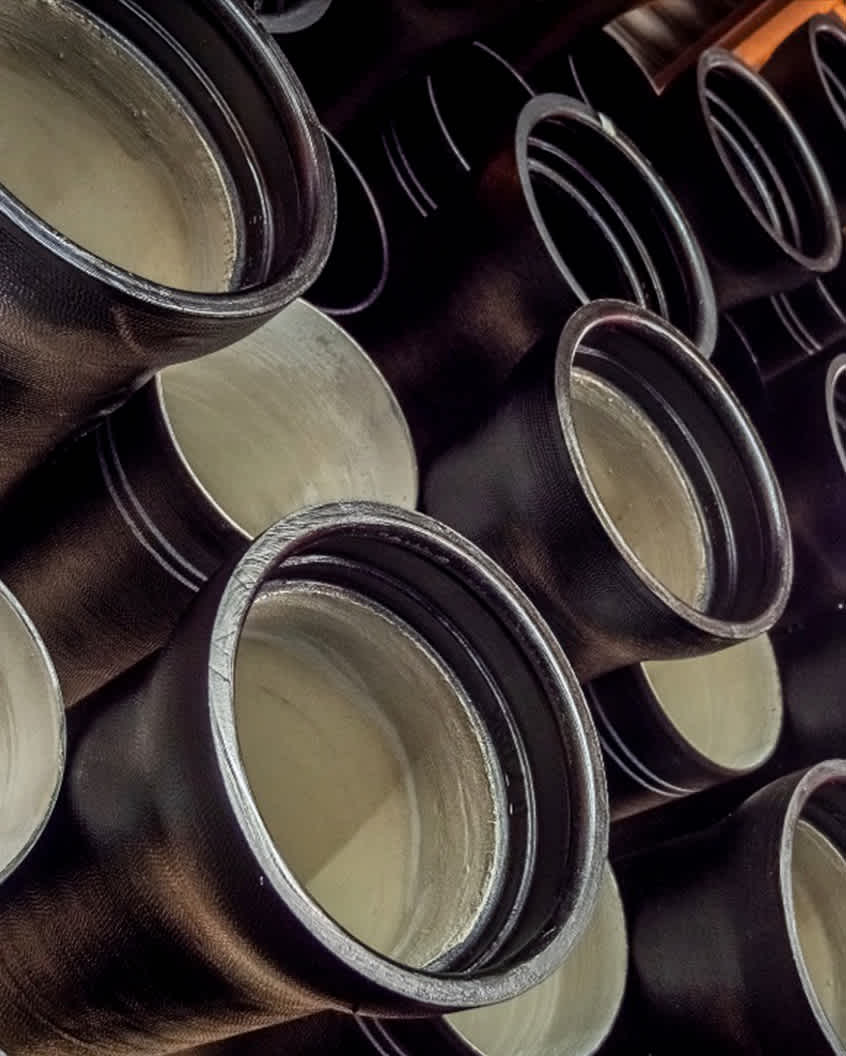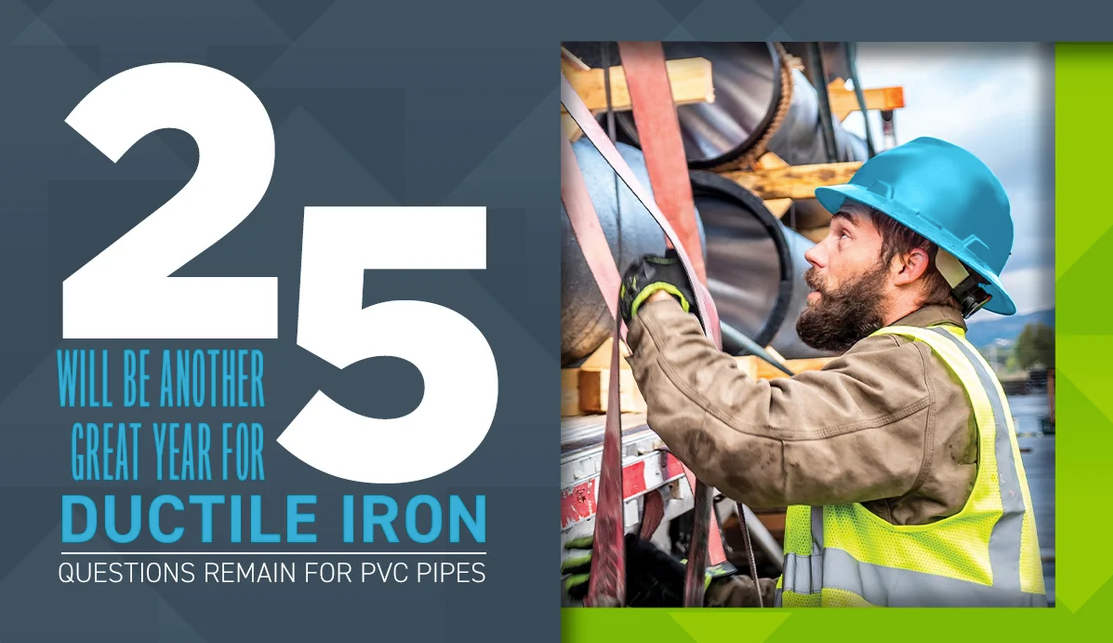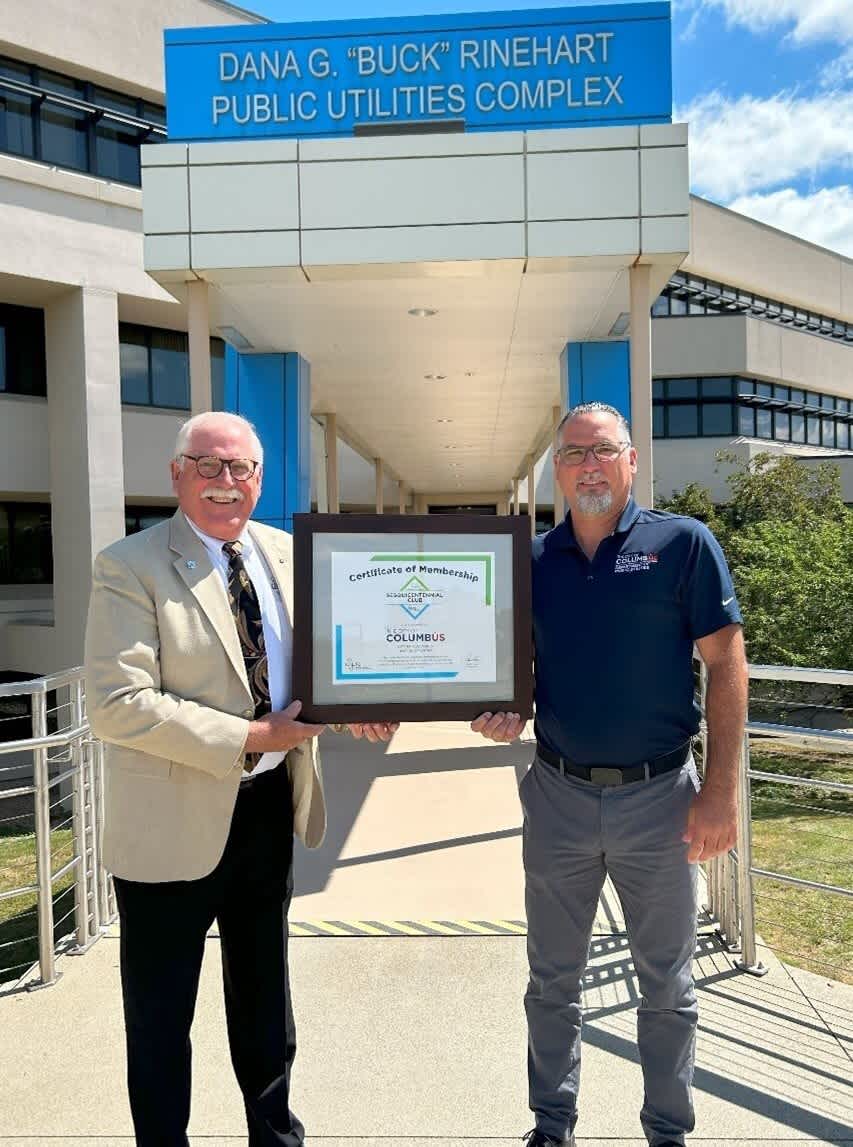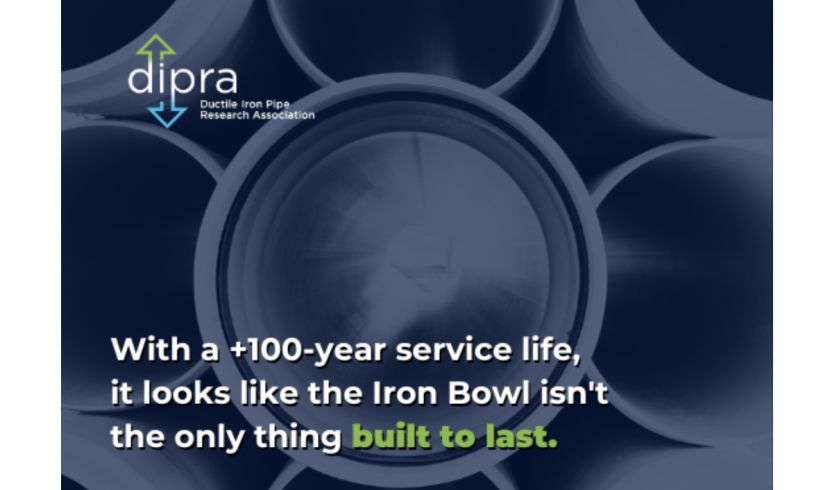
This ["smart-structure"] approach relies on facts, not assertions, and substance over inference.
Infrastructure. It is on everybody’s mind – and rightly so. The need to rehabilitate and upgrade our water and wastewater pipeline network is real and the associated costs are going to be substantial. Substantial, as well, are the decisions that need to be made regarding the materials to use going forward. Those decisions need to be based on valid research and experience, not assertions that aren’t supported in fact.
We have become accustomed to long service lives from systems that we can’t see every day. They are out of sight, out of mind to most of the public. An intelligent approach to infrastructure renewal recognizes that we ask a lot of our pipelines and we need to make sure we design using the latest models for thrust restraint, internal and external loadings, and corrosion control. We also need to take advantage of long-term attributes of the pipes we use and consider the costs to operate and maintain them. A “smart-structure” is our way of looking at it – being smart by looking at the entire life cycle of the pipeline and planning for the future. Research over decades has shown us the many ways to take advantage of Ductile iron pipe’s capabilities for strength, durability, and resilience. It also allows us to promote Ductile by talking about its advantages and not by misrepresenting our competition.
Unfortunately, we believe that the Uni-Bell PVC Pipe Association may see things differently. Their recently commissioned publication, “Life Cycle Assessment of PVC Water and Sewer Pipe and Comparative Sustainability Analysis of Pipe Materials,” by Sustainable Solutions Corporation (SSC) is a disappointing example. The document contains badly documented assertions, misleading inferences, and poorly detailed comparisons. It will be a yeoman’s task to address them all, but one, in particular, is so glaringly wrong that it requires special attention.
In the SSC document, claims are made about cement-mortar linings (CML) that have been successfully used in iron pipe for generations. The allegations are that CML will deteriorate over time. None of the references cited, however, present data or analysis of test results in support of that claim. The most egregious misuse is by citing a doctoral thesis, “Development of a Novel Performance Index and a Performance Model for Metallic Drinking Water Pipelines,” by A.M. St. Clair (St. Clair 2013). In the SSC document, St. Clair is cited to justify the claim that “...due to corrosion and deterioration of the lining material...” the roughness of cement-mortar lined ductile iron increases. The authors go on to say that data in St. Clair support this claim, and provide a completely misleading graphic for emphasis. This is wrong. DIPRA verified the mistake in a thorough review of St. Clair and through direct contact with knowledgeable sources. Nothing in St. Clair justifies the SSC study conclusion.
The efficacy of cement-mortar linings in the protection of cast and Ductile iron pipelines from internal corrosion is well documented and universally recognized. There are many articles and papers to cite, but the Water Research Foundation’s 2011 report, “Life Expectancy of Cement Mortar Linings in Cast and Ductile Iron Pipes,” speaks with authority. In that study, 121 coupons of CML iron pipe taken from in-service pipelines were evaluated; a survey of utility experience was taken and a thorough review of published literature and research on the subject was conducted. This led to the conclusion that, “...CML lined iron pipes typically have a predicted life expectancy exceeding 100 years (Muster 2011, page xxiii).”
Over the years, the Ductile Iron Pipe Research Association (DIPRA) has conducted field testing of in-service pipelines throughout North America in pipelines that range in age from new (1 to 3 years) to a 77 year-old pipeline – the first iron pipeline to be provided a CML - in Charleston, SC. The tests were done using Bernoulli’s principle by measuring the actual loss in energy between two points in each pipeline and calculating the Hazen Williams C factor that would give that loss in energy. These methods are rigorous and the results repeatable. The C factor of 140 that DIPRA recommends was based on the average of 43 field test results.
We have further conducted tests that compared energy losses between Ductile and PVC pipelines in the same system, which provided direct confirmation of Ductile’s energy saving advantage. Because of typically larger inside diameters, for a given flow it takes more energy to pump water through PVC pipe than through Ductile.
The research and references that justify confidence in the longevity of cement-mortar linings are numerous and definitive. Why, then, does the Uni-Bell-sponsored study assert that CMLs deteriorate rapidly over time? Our belief is because the only way its proponents can claim PVC pipe will cost less over a 100 year service life is if it takes less energy to pump water in the operation phase of a pipeline. With CML that does not deteriorate, contrary to the SSC study, it takes more energy to pump water through PVC than it does through Ductile. Over the course of the pipeline’s service life, it then is more expensive to select PVC than it is to select Ductile.
As stated, we believe the SSC study has many misrepresentations of factual information – too many to address in one review. This document may, however, reveal the lengths to which the PVC industry sponsors will go to obfuscate facts despite the well-documented, long-recognized existence of definitive research-based evidence to the contrary.
It makes suspicion the watchword when evaluating the SSC document, and the propensity of the PVC pipe industry to promote its product by attempting to downgrade its competition.
We like the idea of a “smart-structure” approach to upgrading our water and wastewater pipelines. This approach relies on facts, not assertions, and substance over inference. The substantial decisions that will be made over the coming years will provide a legacy of service for generations to come – and will lay a groundwork for the future that is based on knowledge and experience, properly applied. We also know that Ductile iron pipe will continue as the preferred pipe material when the professionals who make those decisions for their utilities and municipalities are provided with substantive research that helps them do their jobs. Our commitment is to continue to educate regarding the advantages of Ductile; and not bombard the public with misleading graphics and poorly vetted assertions.






